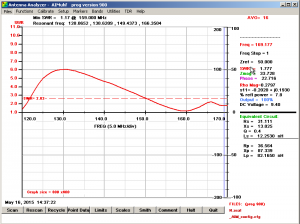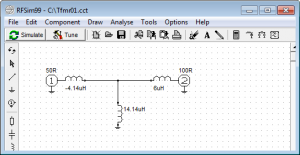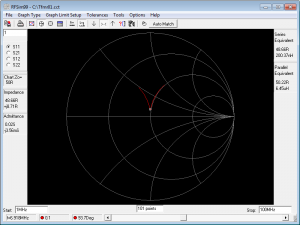This article describes the use of the Array Solutions AIMuhf/AIM900 to test a mobile antenna installation, a quarter wave whip for 2m with about 4m of RG58 cable which has been previously installed and tuned.
The exercise is motivated by a perception that the antenna is not working as well as it should.
Above is a scan of the VSWR. It indicates problems, there should be a main VSWR dip around the high end of the 2m band (147MHz), but instead the minimum is nearer 160MHz. Clearly there is an antenna connected to the far end of the line in some form (ie the inner conductor is not simply broken), but there could be a high resistance in the inner conductor or shield connection (the latter is common issue with this type of antenna base). Continue reading A walk through of a practical application of AIMuhf/AIM900



